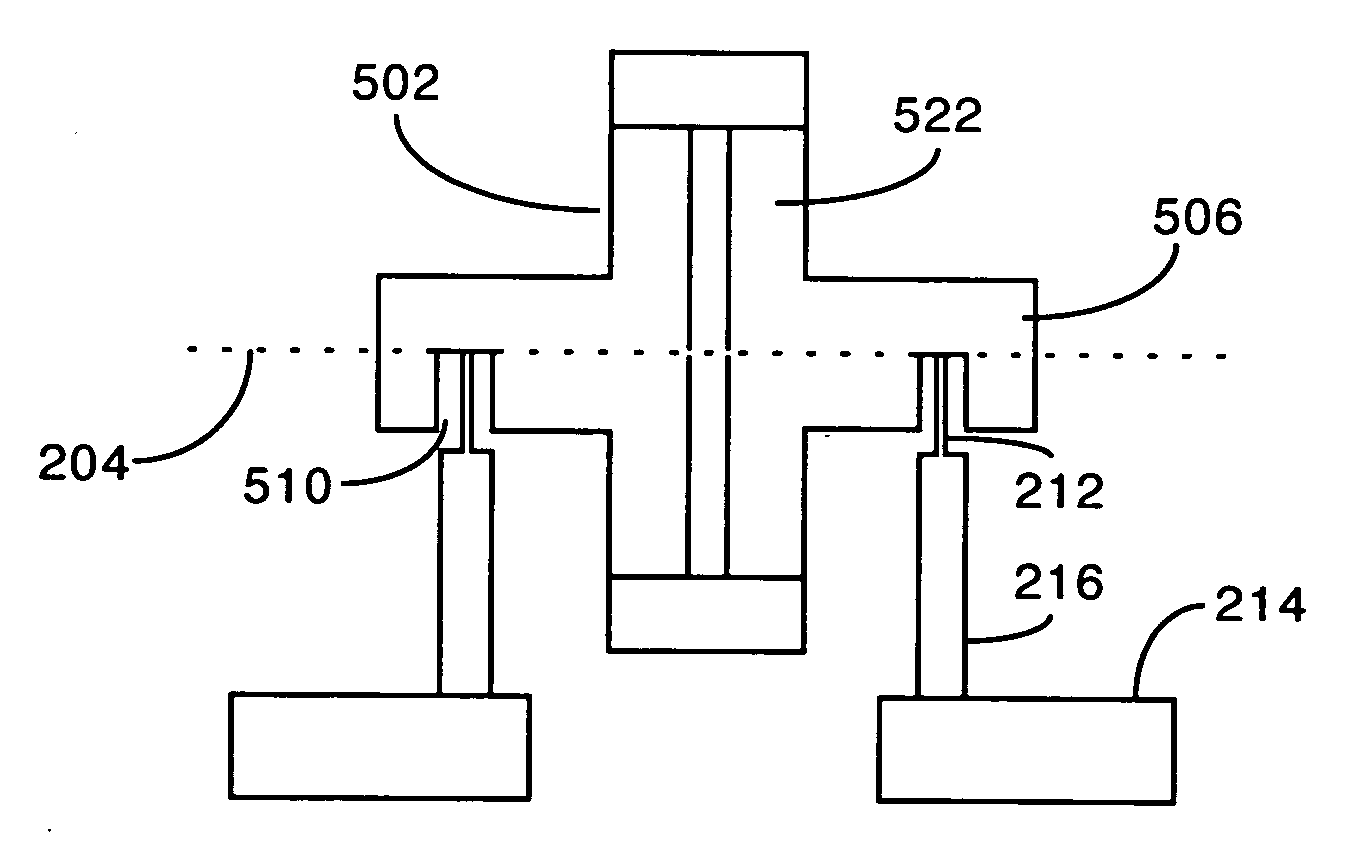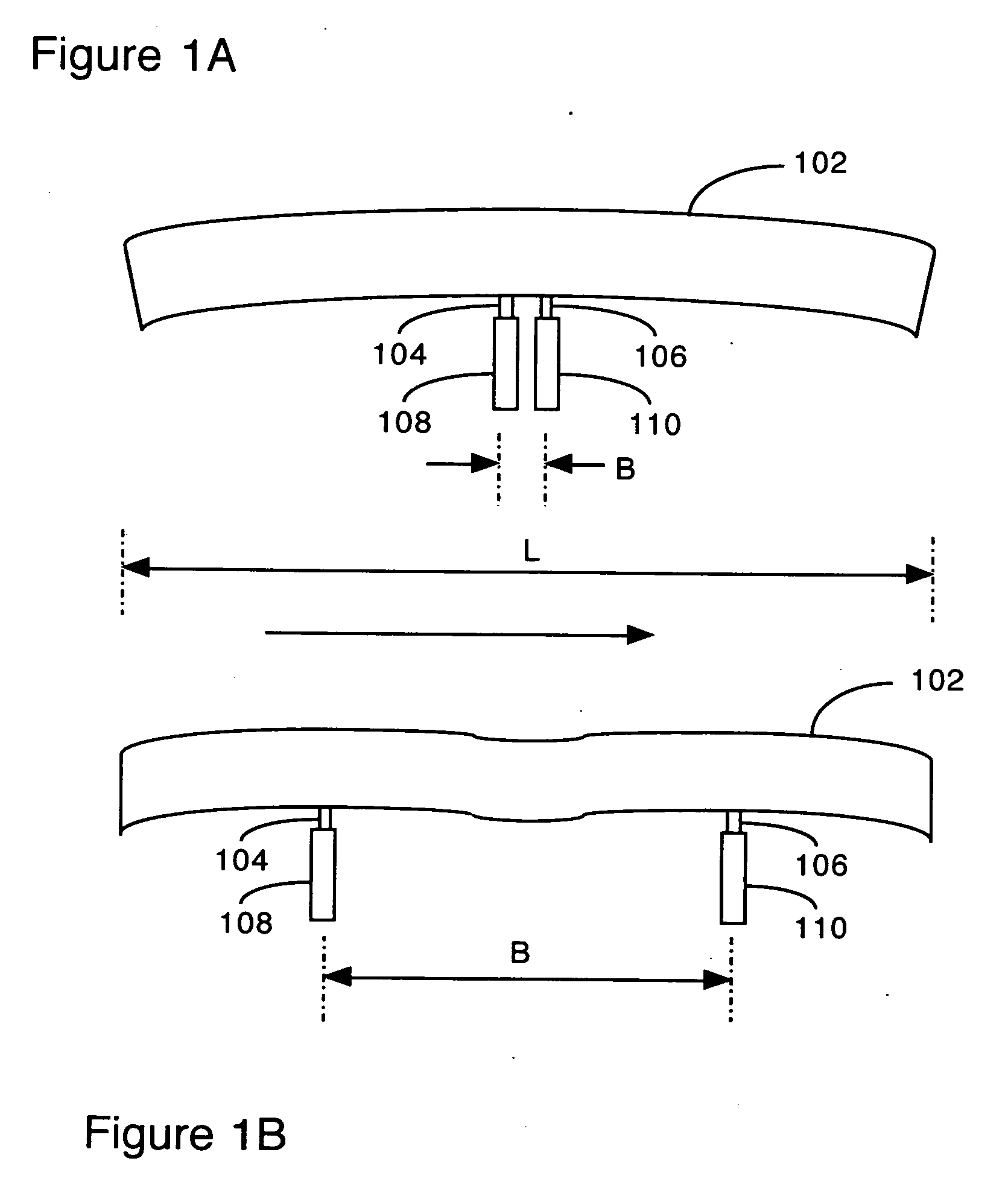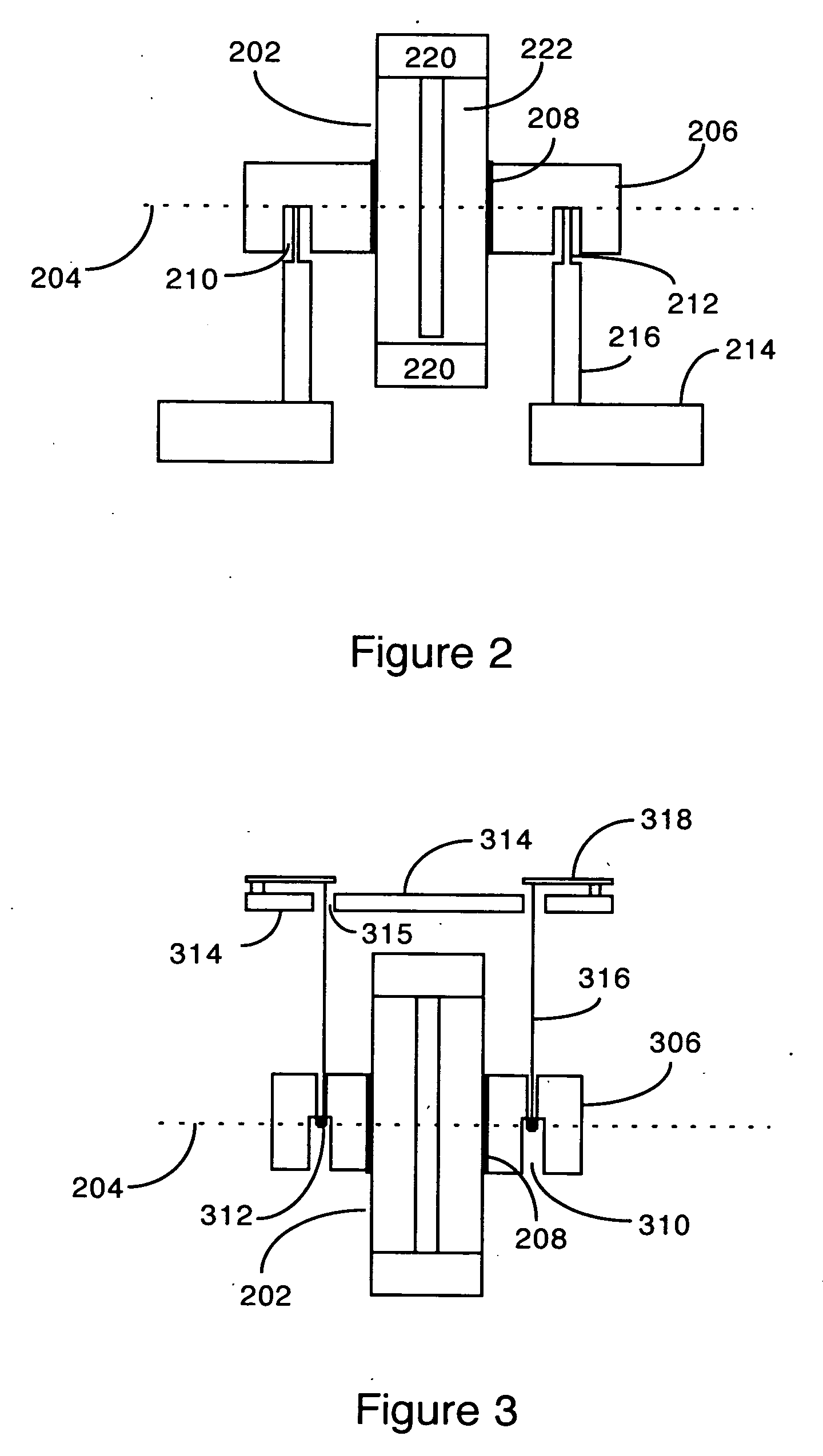Mounting system for optical frequency reference cavities
a technology of optical frequency reference and mounting system, which is applied in the direction of optical resonator shape and construction, metal working apparatus, manufacturing tools, etc., can solve the problem of near-zero net change in the distance between the cavity mirrors, and achieve the effect of effectively preserving the upper/lower symmetry and facilitating the use of additional vibration isolation
- Summary
- Abstract
- Description
- Claims
- Application Information
AI Technical Summary
Benefits of technology
Problems solved by technology
Method used
Image
Examples
Embodiment Construction
[0026]FIGS. 1A and 1B (Prior Art) are simplified side-section diagrams illustrating the conventional horizontal mounting of optical frequency reference cavities 102. Note that the diagrams are not to scale, but are exaggerated for clarity. Both show gravity induced sag of the structure perpendicular to the cavity axis. In the top diagram of FIG. 1A, cavity spacer 102 is supported in two places 104, 106 by, for example, V-blocks 108, 110 which are nearly adjacent (B=0.11L). Such a narrow spacing is chosen to reduce coupling of temperature induced length changes. Unfortunately, this orientation appears to be especially sensitive to vertical vibrations. In addition, the mirror faces on the ends are not parallel because of the bowing of spacer 102.
[0027] The lower diagram of FIG. 1 B shows cavity spacer 102 supported in two places 104,106 by, for example, V-blocks 108, 110. V-blocks 108,110 are separated at a special value (B=0.577L), forming what is known as an “Airy” suspension confi...
PUM
| Property | Measurement | Unit |
|---|---|---|
| diameter | aaaaa | aaaaa |
| diameter | aaaaa | aaaaa |
| cavity length | aaaaa | aaaaa |
Abstract
Description
Claims
Application Information
 Login to View More
Login to View More - R&D
- Intellectual Property
- Life Sciences
- Materials
- Tech Scout
- Unparalleled Data Quality
- Higher Quality Content
- 60% Fewer Hallucinations
Browse by: Latest US Patents, China's latest patents, Technical Efficacy Thesaurus, Application Domain, Technology Topic, Popular Technical Reports.
© 2025 PatSnap. All rights reserved.Legal|Privacy policy|Modern Slavery Act Transparency Statement|Sitemap|About US| Contact US: help@patsnap.com



